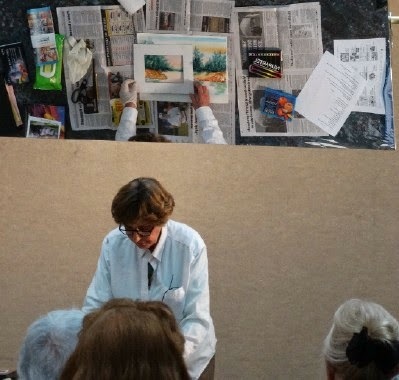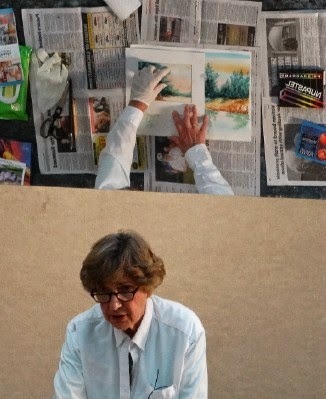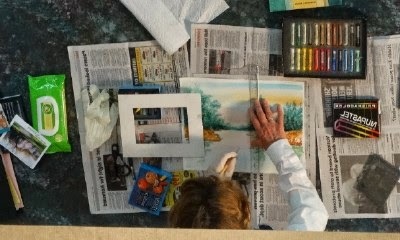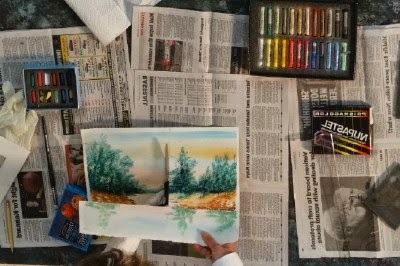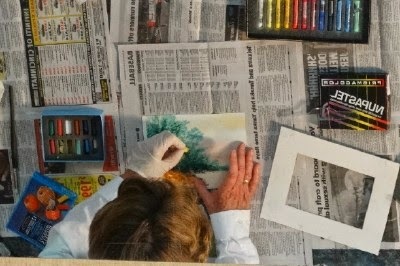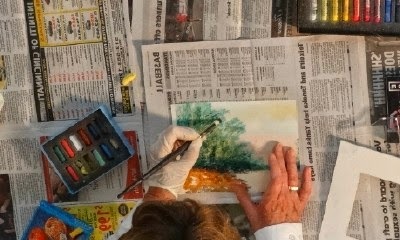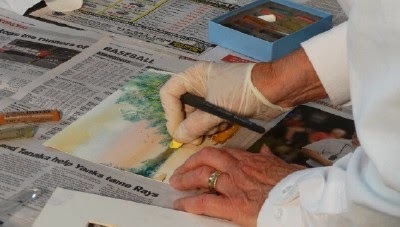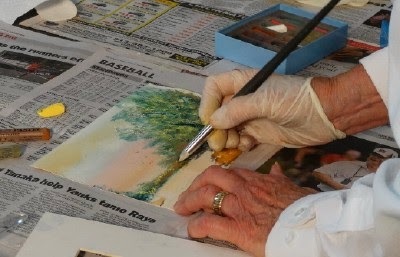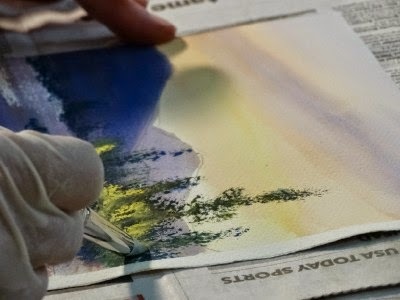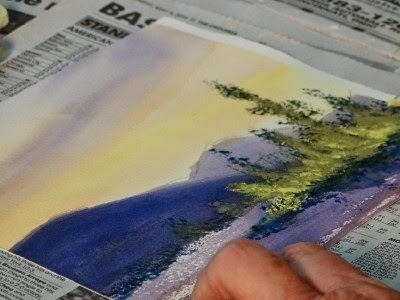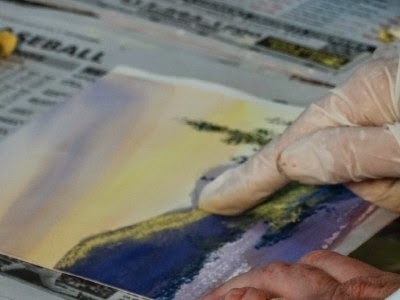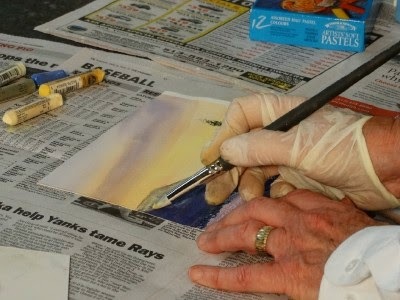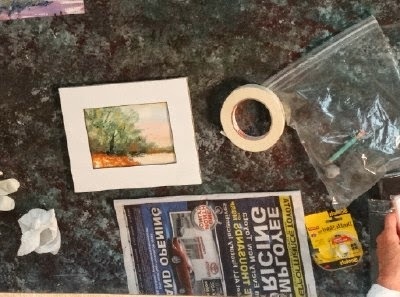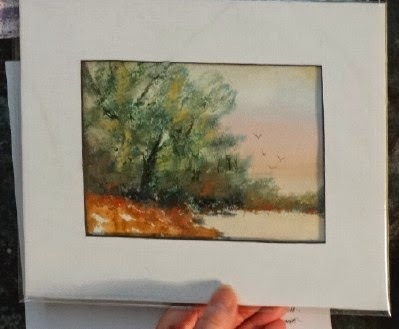MAY 2014 PROGRAM - MARILYN BISHOP
At our May meeting, Rhonda Carpenter introduced our program “guest”, Marilyn Bishop. As many of you know, Marilyn, with several other people, founded our Greater Cincinnati Watercolor Society, has served as president in the past, and is graciously serving again. Rhonda explained that Marilyn is a very “experimental” artist, always trying new things, and new ways of doing old things. She loves textures and shapes, and is always saying “What if . . . . . ?”. Marilyn has a wonderfully diverse learning background, and she now teaches and gives workshops also. Her work is shown in many galleries around the area. The subject for her May presentation - - - “Saving and/or Enhancing Your Watercolor Paintings”.
First, Marilyn asked herself a tongue-in-cheek question “Why am I always giving demos on “failed” watercolor paintings?” Then, as she began her demo, she put down newspaper, and donned a plastic glove on her right hand. She explained that she would be using pastels, and that they are rather messy. She also told us not to “blow away” the pastel “dust”, as it could then enter our lungs. She showed us a painting that she wished she had done differently. From past experience, she believes that pastels cannot save a large painting if there are many areas to be changed, but if one uses just a part of it, good results can happen. She uses a mat as a frame, moving it around the painting until she finds a section that will work. Marilyn gave us a handout about non-objective design elements (Gerard Brommer), that she uses to find the section she wants to “save”. Marilyn “saved” three different paintings during the demo.
She always uses the same mat for her frame. Mark the desired area, and then cut around this part.
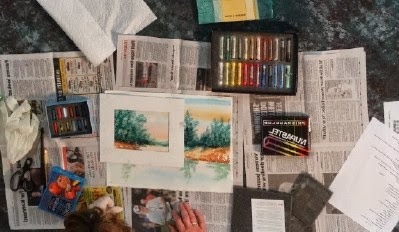
Also, from experience, Marilyn encourages the use of quality pastels, such as Windsor-Newton. She now owns soft, hard, and oil pastels. She selects colors to cover some of the watercolor paint that is unsatisfactory; sometimes using a flat chisel color shaper to move the pastel color around the paper; sometimes her gloved finger. The pastels will cover up “mistakes”, even using a lighter color of pastel to cover a darker watercolor, but there is a limit to the amount of pastel you can use. Pastels can also soften some hard edges of watercolor.
Now that you are happier with your “new” painting, and are ready to frame, cut a mat that has a smaller opening than your regular mat. Put it between the painting with the pastel on it, and your regular mat, to keep the pastel “dust” from getting on the regular mat. You can use double-sided tape to hold the two mats together. You may want to slide this into a plastic sleeve until framing. These sleeves can be purchased online from GT Bag Co.
The reason Marilyn is always giving demos on “failed” paintings is because we all have some of those, and we think she has the best answers on what to do about it!
Submitted by Joyce Grothaus, Secretary; photos by Deb Ward.

